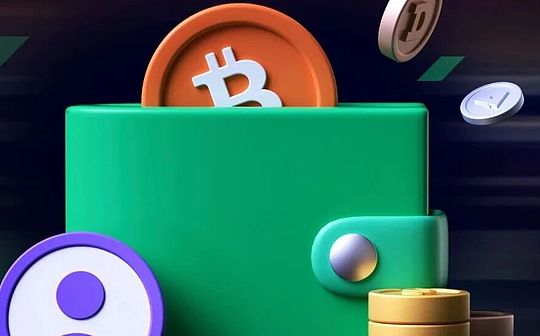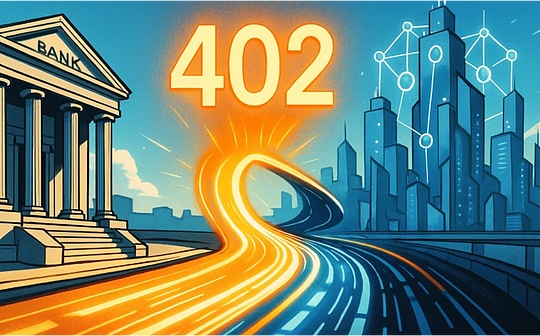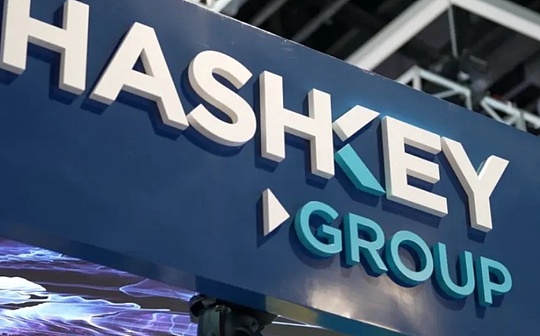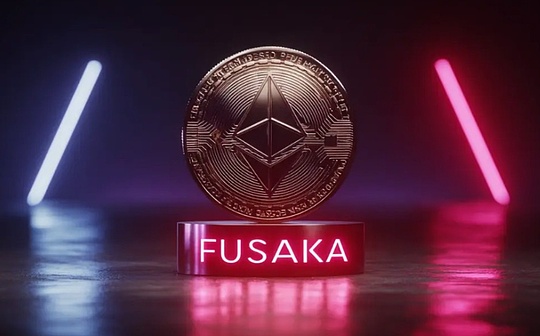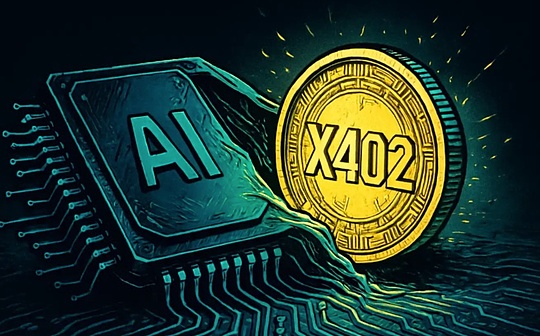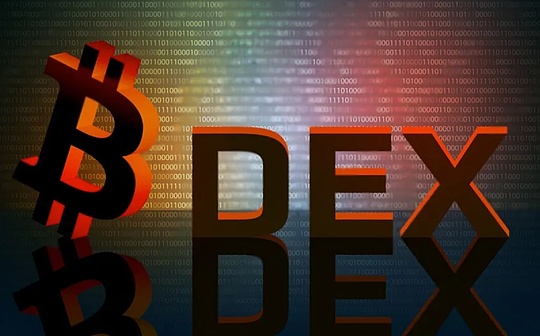
Author: lindabell Source: chainfeeds
In recent years, DEX -based DEX has flourished.However, for users who frequently trades, although the AMM model avoids the risk of entrusting assets to centralized participants, there is still a problem of high GAS costs, not suitable for large transactions and poor user experience.Ethereum OG Guru also pointed out in Twitter Spaces that AMM’s biggest advantage is GAS efficiency, but its transaction form does not conform to PMF.In contrast, thinning has the advantages of flexibility, high capital efficiency, and can realize various complex trading strategies through APIs.He believes,As the throughput of the chain increases, decentralized transactions will eventually return to the thinning mode.This is why he chose to be a Degate Evangelist evangelist.
Of course, whether it is AMM or an order book, it finally decides that it is security, user cost and user experience.This article has selected several representative projects, some of which are still exploring, and others have disappeared.Maybe we can find out what.
Bitshares: Construction of EOS founders, Defi development cornerstone
In 2014, Dan Larimer launched the first decentralized exchange Bitshares.Bitshares introduced a series of new concepts, many of which were later used by the DEFI project.First of all, Bitshares has launched a market anchor asset system, including BitusD, Biteur, Bitcny, etc.The value of these assets on the Bitshares platform is equal to the value of real currency. For example, 1 bitusd is equivalent to 1 USD, but the Bitshares Native Coin BTS is required as a collateral to endorse, and the smart contract is automatically executed to ensure the redemption capacity.Secondly, Bitshares uses algorithms based on entrusted equity proof, so that people holding BTS can participate in the operation and decision -making of the network.Each BTS token is equivalent to a voting. The top 101 holders can pack and settle the transaction and get the handling fee income.In addition, Bitshares also uses a graphene technology to increase transaction processing speed, and the transaction costs are very low, and each transaction fee is less than 0.01 US dollars.
>
Although the trading costs and speeds of Bitshares are comparable to the centralized exchange, it has not continued to develop as expected.One of the reasons may beUser’s cognition and education cost of this new exchanges is too highEssenceIn addition, Bitshares simply moved the order of thin transactions on the chain, which lacks attractiveness.
Bitshares splits fork in 2020. This is because in the BTS 4.0 version upgrade, some developers modified the code of the voting system without the community voting, which caused the community’s dissatisfaction and controversy.Dan Larimer, the founder of Bitshares, launched the smart contract blockchain EOS called the “Ethereum Killer” in 2018.
EtherDelta: Simple model, but the existence of performance bottlenecks
In June 2017, EtherDelta was officially launched and completed the registration procedures of the US Securities and Exchange Commission before launch.Similar to Bitshares, EtherDelta is also a thin DEX.On EtherDelta, users can publish, revoke and match trading orders through trading contracts, and need to pay GAS fees.Once the opponent of the transaction is clicking the order, the transaction contract will automatically deduct the buyer’s assets and send it to the seller. All transactions occur on the chain and are recorded by smart contracts, and user assets are always preserved in their own wallets.In addition, EtherDelta charged 0.3% of the transaction fee and borne by the buyer.Although EtherDelta’s transaction costs are low and the transaction speed is fast, it also has some problems.For example, the matching process of the transaction requires the manual operation of the user. The throughput limit of Ethereum leads to the slow transaction speed, and the delay of the order book may lead to transaction failure and waste GAS costs.
>
Although EtherDelta has these problems, its model is simple, and with the development of Ethereum ecology and the improvement of user education, it has accumulated a considerable number of users and considerable transactions in less than one year.However, unfortunately, in October 2017, EtherDelta encountered hackers, at least 308 tokens with more than hundreds of thousands of dollars in Ethereum and other potential value.Subsequently, the US Securities and Exchange Commission accused him of violating the securities trading law. The founder Zachary Coburn agreed to reach a settlement with the regulatory agency and paid a fine of $ 388,000.Then, Zachary Coburn sold EtherDelta.On February 18, 2018, EtherDelta was exposed to suspend transactions.On February 19, 2018, EtherDelta’s founding technical team announced a split and launched a new trading platform called ForkDelta.
Loopring: The first launched zk rollup,Focus on differentiated factors
With the arrival of the DEFI boom, the problem of transaction throughput on a layer of network began to highlight, and Dex also began to explore to expand to Layer2.Loopring was launched at the end of 2019,It is the first Ethereum Ecological DEX protocol based on ZKROLLUP, which uses ZKP technology to achieve high throughput and non -hostingEssenceLoopring has experienced many iterations. The initial version only supports thin transactions. The second version has strengthened privacy and security by introducing ZKP technology. The third version increases support for AMM models, making DEX more flowing more flowingsex.
>
You can see,Loopring combines two narratives of DEX and ZKEssenceIn terms of performance, Loopring uses ZKP technology to complete all matching logic under the chain and submit it to the chain by generating proof to ensure the efficiency of the transaction, but also to ensure its security and effectiveness.In addition, Loopring also launched an order sharing mode.When a smart contract cannot execute the entire order in a single transaction, this function will split orders into smaller parts for transactions until the original order amount is completed.Specifically, the Loopring chain transaction ring matching technology will aggregate multiple individual orders into one order ring. After the smart contract verification orders, each participant will exchange asset exchange in accordance with the rules of the order ring.The order sharing system will continue to run until all parts are fully executed.For example, if investor A wants to sell the A of the A, investor B wants to buy A and sell B tokens, investors C wantInvestor A get the required currency.This transaction cycle can ensure the optimal price from all transaction participants, and can also obtain higher levels of liquidity.
Aspect of securityLoopring can ensure that the matching of each chain will be proven and submitted to the chain through ZKP technology, proving that the results are correct.In addition, even if the exchanges are suspended, users can still declare their asset legitimacy by providing valid Merkle proof, which can be obtained from the data on Ethereum.However, Loopring’s current security level on L2Beat is still Stage 0, mainly because it lacks the exit window.The Loopring team also previously stated in the conference call that it is currently working hard to create a security committee and is committed to improving the security level on L2Beat. It plans to update some of the users this year to provide more levels of security protection.
Compared with other DEX, Loopring pays more attention to differentiated factors, so many new features and products have been launched to bring unique experiences to users.For example, the Loopring Zkrollup solution is supported in the smart wallet product; the user can easily recharge through the credit card and bank card through the credit card channel;Casting, hanging orders and transfers.In addition, it is worth noting that,The founder of Loopring Wang Dong and the former Loopring chief architect Brecht Devo also co -founded the EVM equivalent ZK Rollup project TAIKO in 2022And in March this year, a $ 15 million round A financing, LightSpeed Faction, Hashed, Generative Ventures, token Bay Capital.At present, TAIKO has completed a total of $ 37 million in financing through three rounds of financing.
DYDX: Focus on the derivative market, and is committed to achieving completely decentralized operation
Another DEX, who moved to the second layer of network due to a layer of network throughput, is DYDX.Unlike Loopring, DYDX focuses on the derivative market and chooseConstruction based on the Starkex L2 solution provided by StarkwareEssenceInitially, DYDX was deployed on the main network of Ethereum, and it was just a margin trading agreement.However, with the soaring GAS cost of Ethereum, DYDX cannot bear the user’s GAS cost, so it decides to migrate to Layer2 and establish a order book -based trading system.
The reason why Starkware’s Starkex L2 solution is selected is because it is more in line with DydX’s needs.This solution can not only handle transactions in batches, but also compatible with various smart contractsEssenceAlthough developing applications on Starkware requires learning its unique language Cairo, compared to other advantages it brings, the advantages it brings is more attractive, including significantly reduced GAS and trading costs, traders can use a single security account for performed by a single security account for performed accountMultiple permanent contract transactions, thereby improving capital efficiency, cross margin and higher scalability, allowing real -time liquidation when trading multiple tokens.
With the help of Starkware’s infrastructure, DYDX has established its own unique position in the decentralized exchange market.But Dydx hopes to achieve a complete decentralized operation mode, so it is decided to decideThe special chain is launched based on the COSMOS SDK to manage thin and other businesses in a completely decentralized mannerEssenceDydx V4 is designed to be completely decentralized end -to -end. The front end is run by Dydx Operations Subdao, and the order book and matching engine are managed by global active authenticants.
>
Specifically, the user trades at the front end. The order is routing to the verified person.The consensus process selects a verification person as a proposal, responsible for matching the order and adding it to the next proposal block.The proposed block passes through the consensus process. If more than two -thirds of the verification nodes confirm the block, it will be submitted and saved into the database on all the verification nodes and all nodes, otherwise it will be rejected.After submitting, the updated chain data is transmitted from the full node to the indexer, and finally provides the front end and other external services through the API and Websockets.
At present, DYDX has opened its V4 code, and plans to focus on the construction of no license market in 2024, including allowing users to list any market at any time and provide instant fluidity through LP vaults to further improve the core transaction function and user experience.In terms of security, Dydx V3 currently has a STAGE 1 on L2Beat.
DEGATE: Focus on security and create the ultimate user experience
DegateIt is an Ethereum ecological decentralized order book protocol based on ZK Rollup, which is positioned as Layer2, which is positioned as focusing on decentralized transactionsEssenceDEGATE is the only ZK Rollup project on the L2Beat that reaches the Stage 2 rating. This means that Degate does not depend on artificial intervention and social consensus, and there is a high degree of trust assumptions.In DEGATE’s security architecture, through the use of ZK Rollup technology, its status effectiveness verification and data availability have been effectively guaranteed.And through asset non -custody storage and “escape models” and other mechanisms, it ensures the security of user assets and the accuracy of transactions.
>
DEGATE effectively reduces transaction costs and improves transaction speed through the chain order matching and thinning management, but how to ensure that the correctness of the under -chain state changes is crucial.First of all, Degate is built based on Zkrollup, mainly because Zk Rollup proves the correctness of its state in mathematics through zero knowledge.Suppose.
>
In the DEGATE structure, the user accesses the Degate website and initiated a transaction request through the wallet, and then the Degate trading system handles user orders. Among them, Operator plays an important role and is responsible for handling the ZK RollUp incident of each batch according to the rules to generate the DEGATE L2 block.ZKBLOCK, and call the circuit (ZKP-works) to generate ZKBLOCK proof, submit it to the contract on the chain to confirm the state change.At the same time, the account, assets and orders of the DEGATE protocol for the DEGATE protocol.You can see,The Degate circuit is located on the second floor. It receives ZKBLOCK as the input data and checks the accuracy of the input data before generating zero -knowledge proof to prevent inconsistency that may cause irreversible errors.
Degate selects Groth16 as its ZK-SNARK structure, because its verification time is shorter and proves that the size is smaller, which means that the data that needs to be transmitted to the blockchain is less, which reduces the processing transaction on the Ethereum blockchain on the Ethereum blockchainGAS cost.Although Groth16 meets the requirements of DEGATE, its biggest disadvantage is that it needs to perform a trusted initialization of each circuit.In order to support more functions, Degate plans to use more advanced zero -knowledge certification solutions such as Halo2 to reduce transaction costs while protecting user privacy and asset security.
As for privacy, Degate’s privacy design focuses on protecting users’ personal information and asset security, not for the privacy system.Through various encryption technologies, such as digital signatures and public key encryption, Degate provides full protection of user’s original information.Each transaction of Degate on Layer2 is settled on the chain. The zero -knowledge generated by the circuit proves that all user assets are changed, and all transactions are open and transparent.
In addition, in DEGATE,Users have full control of fundsBecause asset custody is in smart contracts.The order signature is valid before the order is not fully transaction, and the circuit will verify the signature and validity period of the order to reduce the risk of manipulating orders.And DEGATE also provides options that cancel on the chain, thereby ensuring 100% of no trust.Once the DEGATE node cancels the request transaction to the chain, the order will be marked as closed, and it will never match again.
DEGATE also built -in “escape mode”, allowing users to be withdrawn independently when the operator is unable to handle the transaction.The trigger condition of the “escape mode” is that forced withdrawal for more than 15 days has not been processed.Once triggered, users can directly call the Degate smart contract to retrieve the assets.Under the “escape mode”, smart contracts will reject the new Rollup, that is, all Degate accounts and asset status will remain the same as the final state before the Rollup before the “escape mode”.Subsequently, the smart contract will process all assets based on the final status. Users can use third -party services to analyze the latest accounts and asset status, and retrieve their assets from the smart contract.This model has been successfully tested.In November 2022, Degate closed its L2 node on the Rinkeby network. The community and team tested the “escape mode” and successfully retrieved the assets.
Under the premise of ensuring security and decentralization, Degate also introduced a series of innovative trading mechanisms to provide users with a more efficient and convenient trading experience:
-
Batch spot trading mechanism:AlthoughZK Rollup can significantly compress the data, but it is still low.Data show that traditional ZK Rollup sets a transaction matching that needs to consume 72 bytes.To this end, Degate launched a batch spot trading mechanism. This mechanism can intelligently bundle and compress multiple transactions in the DEGATE LAYER2 block, and then generate validity to the Ethereum main network through encryption.It is reported that this mechanism can bundle more than 9 transactions among different users, and consumes only 83 bytes before the chain.
-
Decentralized grid transaction:The AMM function is implemented by limited orders, and there is no need to use smart contracts as underlying support.By bundling constants such as the number of mesh strategies, grid bias, etc. to each grid transaction signature, Degate eliminates the needs of users to sign multiple transactions and simplify the complexity related to users.
-
Decentralization fixed investment:Degate’s fixed investment function does not charge additional fees.For users who pursue stable income, this function is an ideal choice that not only allows users to have asset custody rights, but also low cost and high efficiency.
Degate officially entered the main network stage on January 9 this year. At present, its TVL has exceeded $ 61.82 million, and its cumulative turnover has exceeded US $ 1.04 billion.With the development of infrastructure and ZK technology, Degate is striving to improve scalability and reduce transaction costs.These include improving ZK computing efficiency and deploying DEGATE to other active Layer2 and superior measures.At the same time, in order to be compatible with Ethereum expansion roadmap and EIP-4844, the Degate plan launched the Degate 2.0 version.This version will use the BLOB data scheme introduced by EIP-4844 to increase DEGATE throughput and further reduce user GAS costs.
Summarize
From Bitshares to Degate, we can clearly observe the evolution of thin DEX.Initially, the project simply migrated the traditional thin mode to the chain.Over time and the development of the market, problems such as high cost of GAS and insufficient user experience are gradually realized.In this context, various projects have begun to explore new trading models to solve these pain points.For example, Loopring combines thin ordering and AMM models, and brings unique experiences to users through differentiation development; DYDX focuses on the derivative market and launch a dedicated chain; Degate chooses to bring users while protecting the user while bringing the user while bringing the userCEX -like experience.We have reason to believe that with the launch of EIP-4844 and other measures, the user experience of thin DEX will be further improved.

